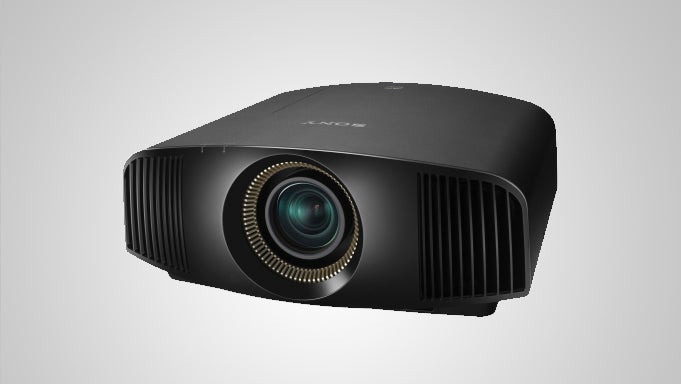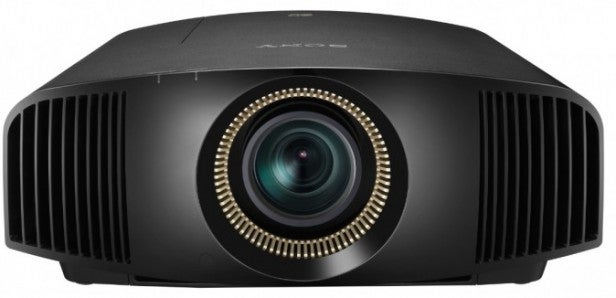Sony VPL-VW320ES Review
Sony VPL-VW320ES
Sony's entry-level 4K projector struggles with HDR

Sections
- Page 1 Sony VPL-VW320ES Review
- Page 2 Picture Quality Review
- Page 3 Conclusions Review
Verdict
Pros
- Fantastically detailed 4K images
- Easy to set up
- Good colour performance
Cons
- Black levels not the best
- Not really bright enough to excel with HDR
- Runs a touch noisily in HDR mode
Key Specifications
- Review Price: £5850.00
- SXRD projector
- Native 4K resolution
- 4K Reality Creation processing
- HDR playback
- 1,500 lumens claimed max brightness
What is the Sony VPL-VW320ES?
The VPL-VW320ES is the “sequel” to the ground-breaking Sony VPL-VW300ES, which made native 4K projection somewhat affordable for the first time in 2014.
One year on and Sony still has the native 4K projection market all to itself, so the £5,849 VPL-VW320ES is one of few options for buyers that don’t want to spend astronomical amounts of cash for a UHD ready player. Luckily, it generally delivers great pictures, and outside of a few black-level response and HDR issues, is a great projector.
Sony VPL-VW320ES – Design and Features
The VPL-VW320ES is a substantial, weighty bit of kit that’s designed to be permanently installed in a dedicated movie room. My demo unit – supplied by Marata Vision – had a nicely unassuming matte-black finish, although it’s also available in white.
Video: Learn more about 4K in our TV buying guide
The VPL-VW320ES’s vaguely elliptical shape is attractive, and connectivity is pretty much at the level I’d expect for a projector at the VPL-VW320ES’s level of the market. Highlights include two HDMIs, one of which is equipped with HDCP 2.2 support for native 4K playback. Following a recent firmware update, the HDCP 2.2 HDMI is also capable of accepting HDR content.
There are also RS-232 and Ethernet port connections to aid system integration, while a pair of 12v trigger outputs are on hand to fire up motorised screens and curtains, for example.
The VPL-VW320ES uses Sony’s proprietary SXRD projection system. Based on liquid crystal on silicon (LCoS) technology, one of the key traits of SXRD is its ability to fit huge numbers of pixels into a very small surface area – hence Sony’s lead in delivering native 4K projection.
The VPL-VW320ES’s 225W high-pressure mercury lamp is rated as being capable of pumping out a maximum of 1,500 lumens of light. This is a little concerning, since the 1800 lumens provided by Sony’s step-up 4K projector, the VPL-VW520ES, was only just high enough to play high dynamic range content comfortably.
The absence of a quoted contrast ratio on the VPL-VW320ES’s spec sheet is also troubling. Sony was more than happy to shout about the VPL-VW520ES’s claimed 300,000:1 contrast ratio, so the absence of a quoted figure here has me thinking that the company has something to hide.
As ever with Sony’s 4K projectors, the VPL-VW320ES delivers a resolution of 4,096 x 2,160 rather than the 3,840 x 2,160 you get with 4K TVs. This doesn’t compromise the aspect ratio of the 3,840 x 2,160 Ultra HD sources you can watch, however. It’s simply a move by Sony to remove the unwanted border pixels often seen when playing 3,840 x 2,160 material.
Related: Best Projector 2016
Other key features include 3D playback (although you don’t get any 3D glasses for free), the ability to add wireless HDMI connectivity via an optional extra IFU-WH1 kit, plus Sony’s previously impressive 4K Reality Creation processing for superior upscaling of HD sources.
Sony VPL-VW320ES – Setup
The VPL-VW320ES is easy to set up thanks to its fully motorised zoom, focus and optical image-shifting controls. The controls respond well to your remote-control button presses, and offer plenty of finesse. The 2.1x zoom is impressively expansive for an “entry-level” 4K projector too.
The VPL-VW320ES also offers plenty of flexibility in its onscreen menus, including colour, gamma and white balance management options, along with multiple options for Sony’s Reality Creation system and “Cinema Black Pro” contrast optimisation tools. It’s possible to adjust the lamp output, too: the “low” setting increasing lamp life to a claimed 6,000 hours while reducing fan noise and boosting black level response.
To get the most out of the projector, I’d recommend turning on the Reality Creation setting since t makes pictures look crisper and more detailed.
You’ll also want to set the gamma to 2.4 – rather than the usually preferable 2.2 – and select either the Cinema Film 1 or 2 picture presets. Finally, I’d set the projector’s MotionFlow processing to True Cinema, or turn it off altogether – and turn off all the noise-reduction tools when watching any good-quality HD and all native 4K content.

